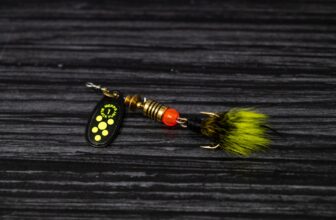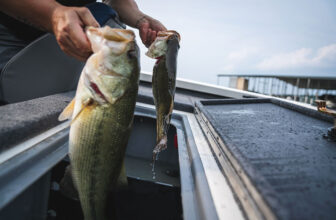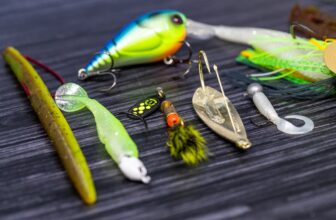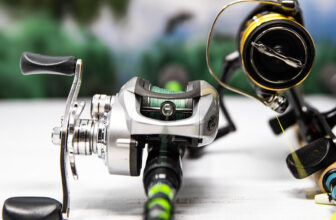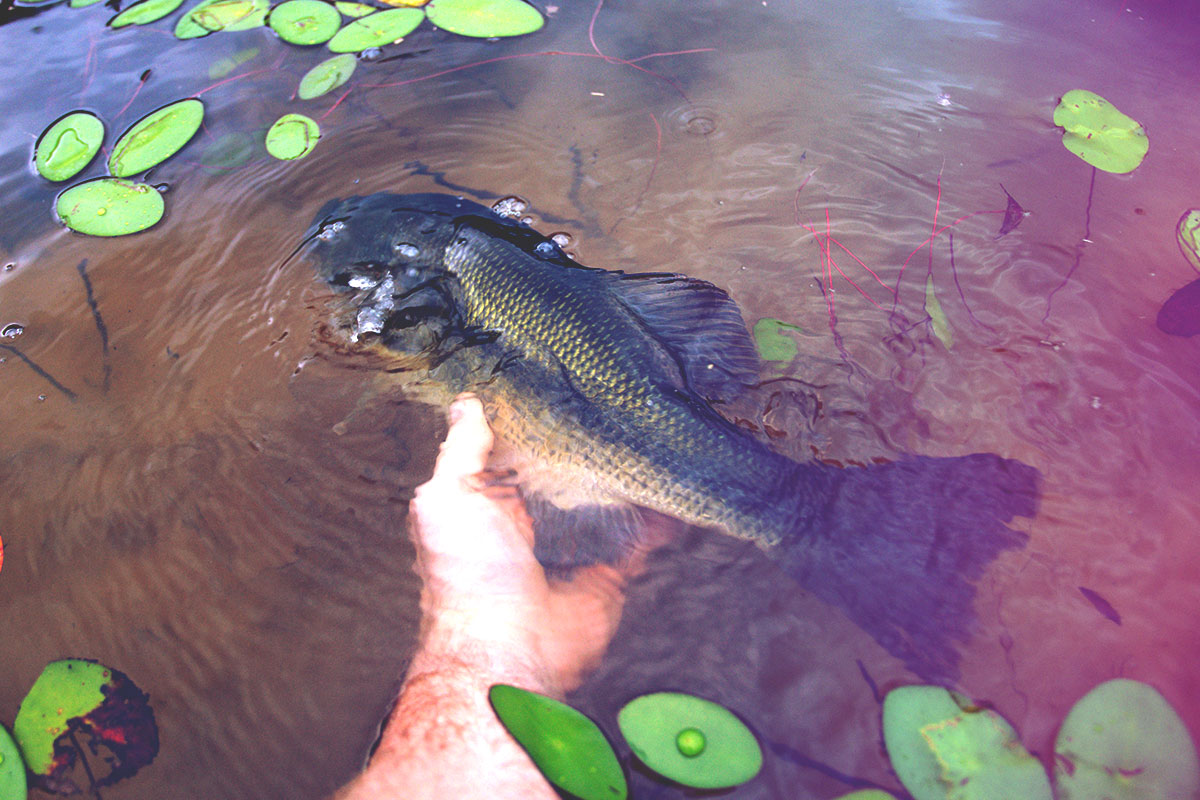
As an avid fisherman and pond owner, I have learned a thing or two about pond stocking over the years. Stocking your pond can be a rewarding experience that provides endless hours of fishing fun, but it requires careful planning, research, and pond management to be successful. In this article, I will share my tips and tricks for successful pond stocking that will help you create a thriving aquatic ecosystem in your backyard.
Introduction to pond stocking
Pond stocking is the process of adding fish to a body of water, such as a pond or lake, for recreational or commercial purposes. The process typically involves selecting and introducing fish species that are well-suited to the specific conditions of the body of water. Proper pond stocking can help to create a balanced and healthy ecosystem that supports a variety of aquatic life, including fish, amphibians, insects, and plants.
Benefits of pond stocking fish
There are several benefits to stocking fish in your pond, including:
1. Enhanced recreational opportunities
Stocking your pond with fish can provide a fun and relaxing recreational activity for you, your family, and your friends. Fishing is a popular pastime that can help to reduce stress, improve mental health, and foster a sense of community.
2. Improved ecosystem health
By stocking your pond with the right fish species, you can help to create a balanced and healthy aquatic ecosystem. Fish can help to control the population of unwanted pests, such as mosquitoes and algae, and can promote the growth of beneficial plants and insects.
3. Potential income source
If you have a large enough pond or lake, you may be able to stock it with fish for commercial purposes. Stocking your pond with high-quality fish can provide a source of income through private booking services like Fishrook, which also doubles to help maintain and manage the population of fish at your property!
Types of game fish for pond stocking
When selecting fish for pond stocking, it is important to choose species that are well-suited to the specific conditions of your pond. Factors such as water temperature, pH level, and oxygen levels can all impact the health and growth of your fish. Some common game fish species for pond stocking include:
1. Bass
Bass are a popular fish species for pond stocking, as they are great for sport fishing and can help to control the population of smaller fish. They require good water quality and plenty of oxygen, so it is important to monitor your pond’s conditions carefully. Stocking your pond with bass can provide a number of benefits, including improved fishing opportunities, better ecological balance, and increased property value. Bass are a highly sought-after game fish that are both fun to catch and delicious to eat. In addition, they can help control other fish populations in your pond, which can lead to a healthier and more balanced ecosystem.
2. Trout
Trout are another popular fish species for pond stocking, as they are hardy and can tolerate a wide range of water conditions. They are also a good source of income for commercial pond owners, as they are popular with anglers.
3. Catfish
Catfish are a hardy fish species that are well-suited to pond environments. They are bottom-dwelling fish that feed on insects, plants, and other small fish. They are also a good source of income for commercial pond owners, as they are popular with anglers.
4. Crappie
Crappie are highly sought after by anglers for their delicious taste and abundance of fight. Not only do they provide a fun and exciting fishing experience, but they also help with pond management. Crappie fish are known for their rapid reproduction and growth rates, which means they can quickly populate your pond and provide a sustainable source of fishing.
Factors to consider before pond stocking with fish
Before stocking your pond with fish, there are several factors to consider to ensure that your fish thrive in their new environment. These include:
1. Pond size and depth
The size and depth of your pond will determine how many fish you can stock and what types of fish are suitable. Larger ponds can support more fish and larger fish species, while smaller ponds may only be able to support a few small fish.
2. Water quality
Water quality is critical to the health and growth of your fish. You should test your pond’s water regularly for pH levels, dissolved oxygen, and other important parameters to ensure that your fish have a healthy environment to live in.
3. Food sources
Fish require a balanced diet to grow and thrive. You should ensure that your pond has enough natural food sources, such as insects and plants, to support your fish population. You may also need to supplement their diet with fish food or other feed.
How to stock a pond with fish – step-by-step guide
Stocking your pond with fish requires careful planning and preparation to ensure that your fish have the best chance of success. Here is a step-by-step guide to stocking your pond with fish:
1. Determine the appropriate fish species
Before stocking your pond, you should research the different fish species that are suitable for your pond’s conditions. You should choose fish that are well-suited to your pond’s size, depth, and water quality.
2. Calculate the appropriate stocking density
Once you have selected your fish species, you should calculate the appropriate stocking density for your pond. This will depend on factors such as the size of your pond, the type of fish, and the intended use of your pond.
3. Acclimate the fish
Before releasing your fish into the pond, you should acclimate them to their new environment. This involves gradually adjusting the temperature and water chemistry of their holding tank to match that of your pond.
4. Release the fish
Once your fish have been acclimated, you can release them into your pond. It is important to release them slowly and gently to avoid stressing the fish or damaging their scales.
5. Monitor the fish
After stocking your pond with fish, you should monitor their health and behavior regularly. You should also test your pond’s water quality regularly to ensure that it is suitable for your fish.
Choosing the right Forage Fish for growing Bigger Bass and Catfish
Forage fish are small fish that serve as a food source for larger fish in your pond. They are an essential part of the pond ecosystem, as they help to maintain the balance between the predator and prey fish populations. Forage fish play a vital role in the food web and are responsible for converting primary production into a form that predator fish can consume. Without forage fish, the predator fish in your pond would have a hard time finding enough food, which could lead to stunted growth, poor health, and even death.
Forage fish also help to improve water quality in your pond. They consume algae and other plant material, which can reduce the amount of nutrients in the water. This, in turn, can help to prevent the growth of harmful algae blooms and promote the growth of beneficial plants. Forage fish also help to stir up the sediment at the bottom of your pond, which can release nutrients that have become trapped and improve water clarity.
It’s important to note that not all forage fish are created equal. Different species have different requirements and characteristics, and choosing the wrong forage fish can have detrimental effects on your pond’s health.
Types of forage fish for pond stocking
There are many different types of forage fish available for stocking in your pond. Here are a few of the most common:
Bluegill
Bluegill are a type of sunfish that are commonly found in ponds and lakes. They are known for their aggressive feeding behavior and can consume a wide variety of food items, including insects, crustaceans, and small fish. Bluegill are also known to reproduce quickly, which can help to ensure a steady supply of forage fish in your pond.
Redear Sunfish
If you’re looking to stock your private pond, then you should definitely consider adding some redear sunfish to the mix. These fish are incredibly hardy and can thrive in a variety of different environments, making them a great choice for pond owners. In addition, redear sunfish are excellent at controlling populations of snails and other aquatic pests, which can help to keep your pond healthy and balanced. When it comes to pond management, redear sunfish are a valuable addition that can help to keep the ecosystem in check. So if you’re looking for a fish that is easy to care for, great at pest control, and can help to maintain the overall health of your pond, then be sure to consider stocking it with some redear sunfish today!
Crawfish
Stocking a private pond with crawfish is an effective way to grow big bass. Crawfish are a natural food source for bass and provide them with the necessary nutrients to thrive. When stocked in a pond, crawfish will multiply and create a sustainable food source for the bass. This will lead to healthier and bigger bass, as they will have access to a consistent and high-quality food source. In addition, crawfish are known for their burrowing behavior, which helps to aerate the pond and create a healthy ecosystem. Pond stocking with crawfish is a cost-effective way to improve the health and growth of bass populations, and it requires minimal maintenance.
Fathead Minnows
Fathead minnows are a popular choice for stocking in ponds because they are hardy and can tolerate a wide range of water conditions. They are also prolific breeders, which can help to ensure a steady supply of forage fish in your pond. Fathead minnows are small, typically only growing to be 2-3 inches in length, which makes them an ideal food source for larger fish.
Golden Shiners
Golden shiners are another popular choice for stocking in ponds. They are a bit larger than fathead minnows, typically growing to be 4-6 inches in length. Golden shiners are also prolific breeders and can produce a large number of offspring in a short amount of time. They are an excellent food source for larger fish and are known to be very active and lively, which can add to the overall aesthetic of your pond.
Threadfin Shad
Threadfin shad are a type of herring that are commonly found in freshwater environments. They are typically only 2-3 inches in length and are a favorite food source for larger predator fish. Threadfin shad are known for their unique swimming behavior, which can add to the overall aesthetic of your pond.
Tilapia
Tilapia are known for their ability to control algae growth, which can help keep your pond clean and clear. Additionally, they are efficient feeders, converting food into biomass quickly and effectively. This means that they can help maintain a healthy balance of nutrients in your pond, which can promote the growth of other aquatic plants and animals.
Grass Carp
Grass carp fish are known for their ability to control the growth of aquatic plants, which can help reduce the risk of blooms and other issues that can impact water quality. Not only do grass carp help with plant management, they’re also a popular sport fish that can provide hours of entertainment for anglers. And because they’re herbivores, they won’t compete with other fish for food.
Characteristics of different forage fish species for pond stocking
Each forage fish species has its own unique set of characteristics that make it suitable for different types of ponds. Here are a few of the most important characteristics to consider when choosing forage fish:
Reproductive Rate
The reproductive rate of a forage fish species is an important consideration when choosing which ones to stock in your pond. Some forage fish, such as fathead minnows and golden shiners, are known for their prolific breeding behavior and can produce a large number of offspring in a short amount of time. This can help to ensure a steady supply of forage fish in your pond.
Size
The size of a forage fish species is another important consideration. Smaller forage fish, such as fathead minnows and threadfin shad, are ideal for ponds with smaller predator fish. Larger forage fish, such as bluegill, can be suitable for larger ponds with larger predator fish.
Water Temperature
Different forage fish species have different temperature requirements. Fathead minnows, for example, can tolerate a wide range of water temperatures, while bluegill prefer warmer water. It’s important to choose forage fish that are suitable for the water temperature in your pond to ensure their survival.
Feeding Behavior
The feeding behavior of a forage fish species is another important consideration. Some forage fish, such as bluegill, are aggressive feeders and can consume a wide variety of food items, while others, such as threadfin shad, prefer to feed on plankton and other small organisms.
Factors to consider when choosing forage fish
When choosing forage fish for stocking in your pond, there are several factors to consider. Here are a few of the most important:
Predator Fish Population
The predator fish population in your pond is an important consideration when choosing forage fish. You want to choose forage fish that are suitable for the size and type of predator fish in your pond to ensure their survival.
Pond Size
The size of your pond is another important consideration. Smaller ponds may not be able to support larger forage fish, while larger ponds may require a larger number of forage fish to maintain a healthy ecosystem.
Water Quality
Water quality is an essential consideration when choosing forage fish. You want to choose forage fish that are suitable for the water conditions in your pond. If the water quality in your pond is poor, you may need to take steps to improve it before stocking forage fish.
Availability
The availability of forage fish in your area is another important consideration. You want to choose forage fish that are readily available and easy to obtain.
Stocking density and ratios
Once you have chosen the right forage fish for your pond, it’s essential to consider stocking density and ratios. Stocking density refers to the number of forage fish per acre of water, while stocking ratios refer to the ratio of predator fish to forage fish.
The recommended stocking density for forage fish is typically between 1,000 and 2,000 fish per acre of water. However, this can vary depending on the size of your pond and the type of forage fish you choose to stock.
The recommended stocking ratio for predator fish to forage fish is typically 1:3 to 1:5. This means that for every one predator fish in your pond, you should have three to five forage fish. This helps to ensure that there is enough food for the predator fish and that the forage fish population can sustain itself.
Feeding and pond management of forage fish
Forage fish typically do not require supplemental feeding, as they will feed on natural food sources in your pond. However, if you want to promote the growth and health of your forage fish population, you can supplement their diet with commercial fish food.
It’s important to monitor the health and growth of your forage fish population regularly. If you notice any signs of stress or disease, you may need to take steps to improve water quality or adjust stocking density and ratios.
Monitoring and maintaining forage fish populations
Monitoring and maintaining your forage fish population is essential to ensure the long-term health of your pond. Regular monitoring can help you identify potential issues before they become major problems.
One way to monitor your forage fish population is to conduct regular fish surveys. This involves using specialized equipment to capture and count fish in your pond. Fish surveys can help you track changes in the size and health of your forage fish population and identify any potential issues.
Common mistakes to avoid when stocking forage fish
When stocking forage fish in your pond, there are several common mistakes to avoid. These include:
Overstocking
Overstocking your pond with forage fish can lead to poor water quality, stunted growth, and disease. It’s essential to choose the right stocking density and ratios to ensure the long-term health of your pond.
Choosing the wrong species
Choosing the wrong forage fish species can have detrimental effects on your pond’s health. It’s important to consider the characteristics of each species before making a decision.
Ignoring water quality
Ignoring water quality can lead to poor health and growth of your forage fish population. It’s essential to maintain good water quality in your pond through regular testing and treatment.
Failing to monitor and maintain populations
Failing to monitor and maintain your forage fish population can lead to a decline in their numbers and overall health. Regular monitoring and maintenance are essential to ensure the long-term health of your pond.
In conclusion, choosing the right forage fish for stocking in your pond is essential to maintaining a healthy ecosystem. By considering the characteristics of different forage fish species and factors such as predator fish population and pond size, you can create a thriving aquatic environment that will provide years of enjoyment. Remember to monitor and maintain your forage fish population regularly and avoid common mistakes such as overstocking and ignoring water quality. With the right care and attention, your pond can be a beautiful and thriving addition to your property.
Best practices for pond management
Proper pond management is critical to the health and success of your fish population. Here are some best practices for managing your pond’s fish population:
1. Avoid overstocking
Overstocking your pond with fish can lead to poor water quality, disease outbreaks, and stunted growth. You should ensure that you stock your pond at an appropriate density to avoid these issues.
2. Provide adequate food and habitat
Fish require a balanced diet and adequate habitat to grow and thrive. You should ensure that your pond has enough natural food sources, such as insects and plants, to support your fish population. You should also provide habitat, such as submerged logs or rocks, for your fish to hide and spawn.
3. Prevent the spread of disease
Fish can be susceptible to diseases and parasites that can spread quickly through a pond population. You should take steps to prevent the spread of disease, such as quarantining new fish and regularly testing your pond’s water quality.
Benefits of getting an Electrofishing Survey of your Pond or Lake
An electrofishing survey is a scientific technique used to assess the fish population of a body of water. It involves using an electric current to temporarily stun the fish, making them easier to capture and count. This survey is a valuable tool for pond management, and it provides numerous benefits to lake owners.
One of the most significant benefits of an electrofishing survey is that it provides an accurate assessment of the fish population in your lake. Knowing the number and size of fish in your lake is essential for effective pond management. This information helps you determine the appropriate stocking levels, feeding regimes, and fishing regulations for your lake. It also helps you identify any issues with the fish population, such as overpopulation or underpopulation, and take corrective measures if necessary.
Another benefit of an electrofishing survey is that it allows you to identify the different species of fish in your lake. This is important because different fish species have different needs and requirements. For example, some fish species may require different types of food or habitats than others. Knowing the species of fish in your lake helps you tailor your pond management strategies to meet their specific needs.
Furthermore, an electrofishing survey can also help you identify any potential problems with your lake’s ecosystem. For example, if you notice a decline in the number or size of fish, it could indicate a problem with water quality, oxygen levels, or other environmental factors. Identifying these issues early on allows you to take corrective measures before they cause significant damage to your lake’s ecosystem.
So, if you want to ensure that your private fishing lake is healthy and provides the best fishing experience for you and your guests, consider getting an electrofishing survey done today!
Maintaining the health of your pond fish
Maintaining the health of your pond fish requires ongoing care and attention. Here are some tips for keeping your fish healthy:
1. Monitor water quality
Regularly testing your pond’s water quality is critical to maintaining the health of your fish. You should test for parameters such as pH, dissolved oxygen, and ammonia levels.
2. Provide a balanced diet
Fish require a balanced diet to grow and thrive. You should provide your fish with a variety of natural food sources, such as insects and plants, as well as fish food or other feed.
3. Manage predators
Predators such as birds, raccoons, and otters can prey on your fish population. You should take steps to manage predators, such as installing fencing or netting around your pond.
Common mistakes to avoid while pond stocking
Pond stocking can be a complex process that requires careful planning and management. Here are some common mistakes to avoid:
1. Overstocking
Overstocking your pond with fish can lead to poor water quality, disease outbreaks, and stunted growth. You should ensure that you stock your pond at an appropriate density to avoid these issues.
2. Stocking the wrong fish species
Stocking your pond with the wrong fish species can lead to poor growth and health, as well as negative impacts on the ecosystem. You should research the appropriate fish species for your pond’s conditions before stocking.
3. Failing to monitor water quality
Failing to monitor your pond’s water quality can lead to poor growth and health of your fish population. You should regularly test your pond’s water quality and make adjustments as needed.
Professional pond stocking services
If you are not confident in your ability to stock your pond or manage your fish population, you may want to consider hiring a professional pond stocking service. These services can provide expert advice and assistance in selecting fish species, calculating stocking densities, and managing your fish population.
Conclusion
Stocking your pond can be a rewarding experience that provides endless hours of fishing fun, but it requires careful planning, research, and management to be successful. By following the tips and tricks outlined in this article, you can create a thriving aquatic ecosystem in your backyard that supports a healthy and diverse fish population. Remember to monitor your pond’s water quality regularly, provide a balanced diet and habitat, and avoid common mistakes such as overstocking and stocking the wrong fish species. With proper care and attention, your pond can provide years of enjoyment and relaxation for you and your family.







